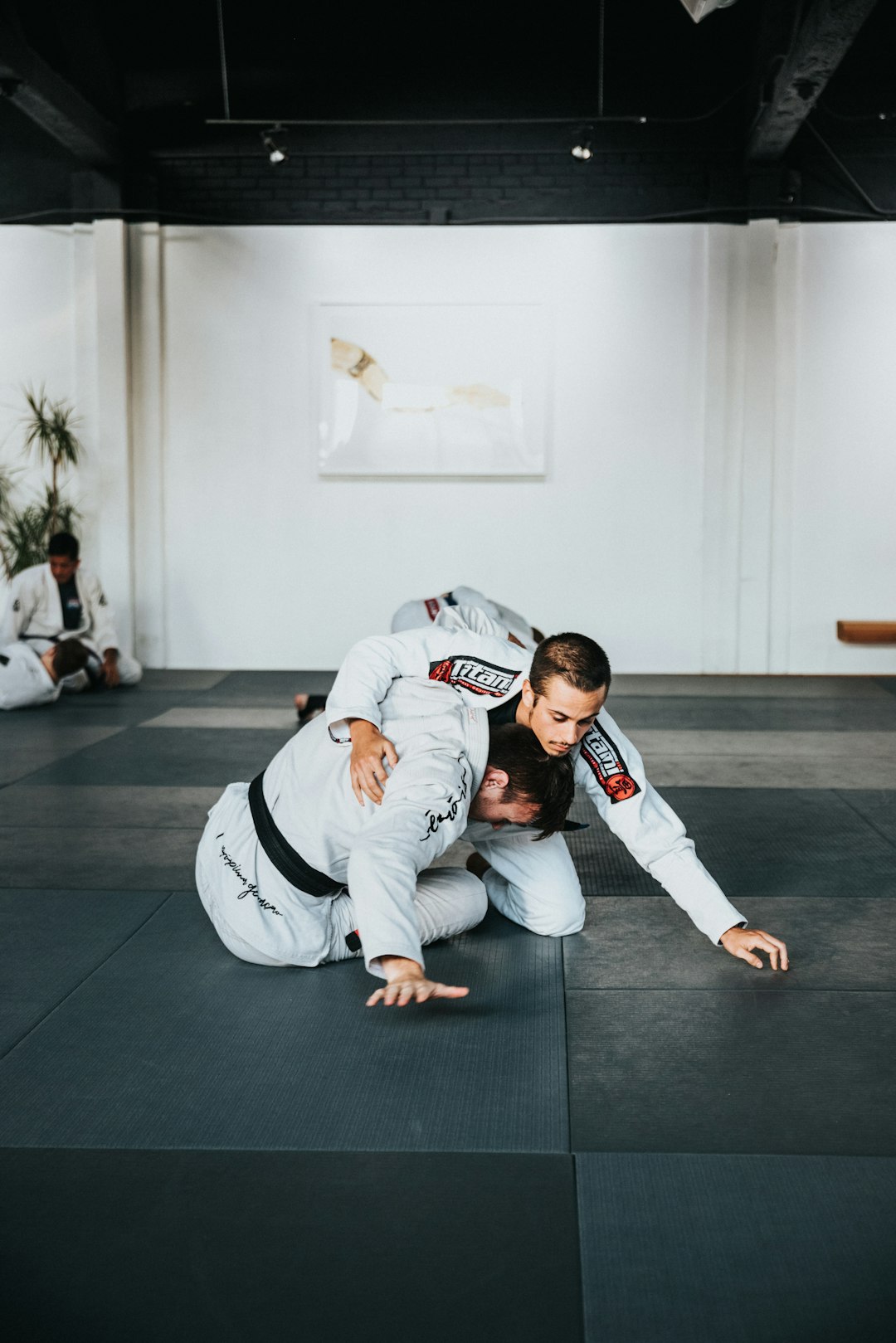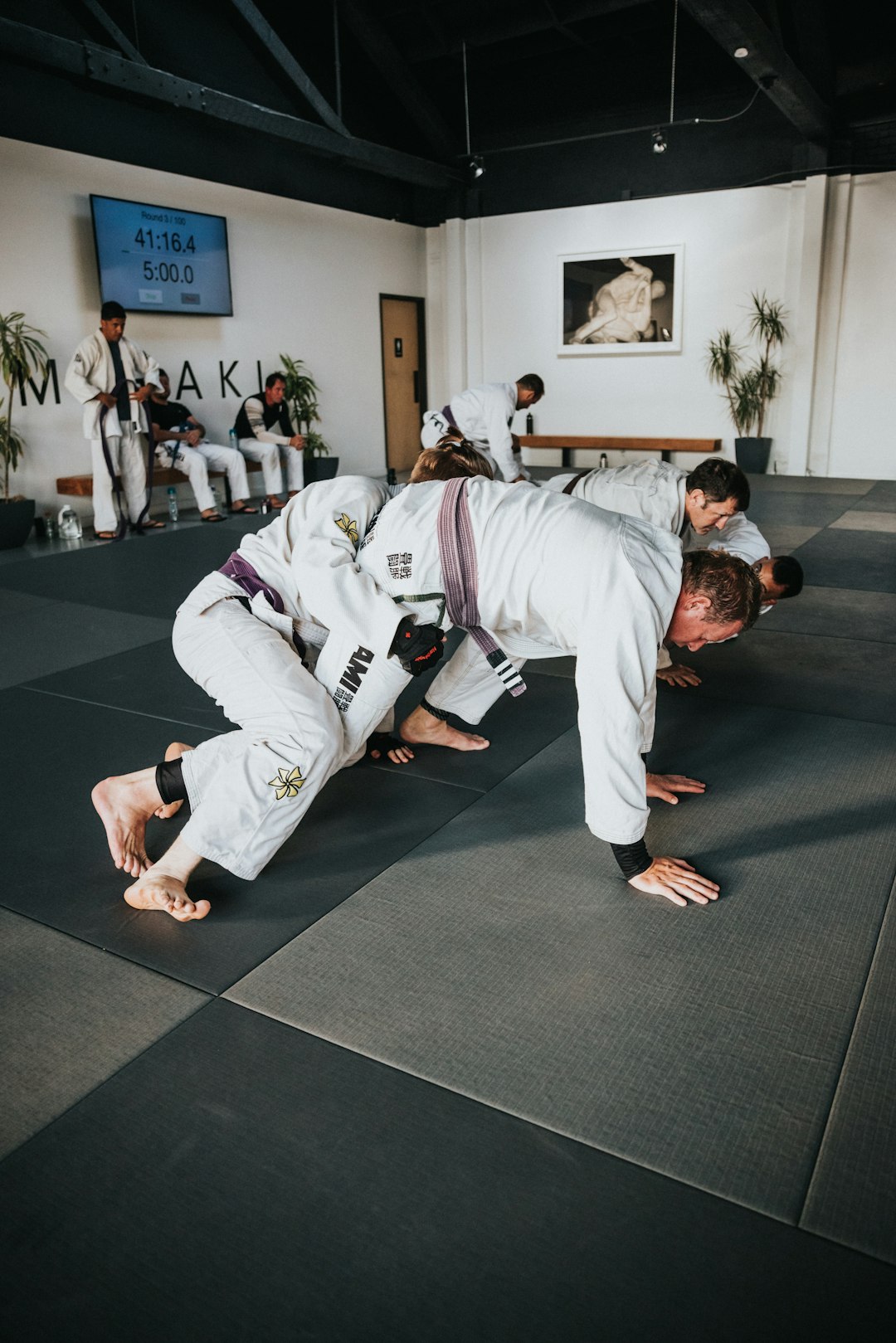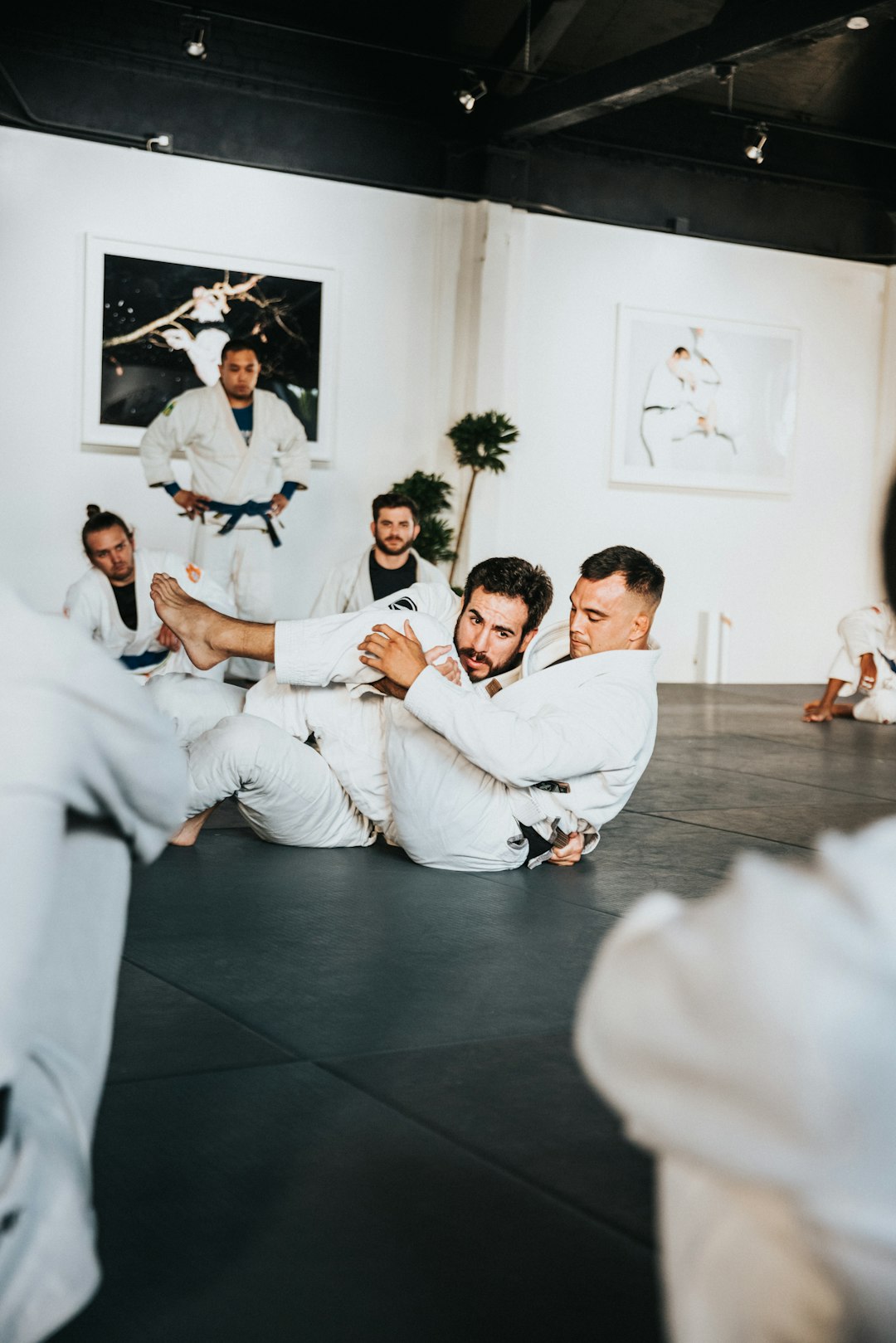Support our educational content for free when you purchase through links on our site. Learn more
[2023] Types of Martial Arts: A Comprehensive Guide to the World of Combat Sports
Quick Answer: There are numerous types of martial arts, each with its own unique techniques, philosophies, and cultural origins. Some popular martial arts include Brazilian Jiu-Jitsu, Muay Thai, Karate, Taekwondo, Judo, and Boxing. Each martial art offers its own benefits and challenges, making it important to choose one that aligns with your goals and interests.
Table of Contents
- Quick Answer
- Quick Tips and Facts
- Brazilian Jiu-Jitsu
- Muay Thai
- Karate
- Taekwondo
- Judo
- Boxing
- Mixed Martial Arts (MMA)
- Krav Maga
- Wrestling
- Capoeira
- Kung Fu
- Conclusion
- FAQ
- Recommended Links
- Reference Links
Quick Answer
There are numerous types of martial arts, each with its own unique techniques, philosophies, and cultural origins. Some popular martial arts include Brazilian Jiu-Jitsu, Muay Thai, Karate, Taekwondo, Judo, and Boxing. Each martial art offers its own benefits and challenges, making it important to choose one that aligns with your goals and interests.
Quick Tips and Facts
- Martial arts originated in various cultures around the world and have evolved over centuries.
- Martial arts provide physical fitness, self-defense skills, discipline, and mental focus.
- Different martial arts emphasize striking, grappling, or a combination of both.
- Training in martial arts can improve overall coordination, flexibility, and strength.
- It is important to find a reputable instructor and training facility for learning martial arts.
Now, let's dive into the world of martial arts and explore some of the most popular types in more detail.
Brazilian Jiu-Jitsu
Brazilian Jiu-Jitsu (BJJ) is a martial art and combat sport that focuses on ground fighting and submission holds. It emphasizes technique and leverage to overcome larger and stronger opponents. BJJ is known for its effectiveness in self-defense situations and is a fundamental component of mixed martial arts (MMA) training.
Key Points:
- BJJ originated from Kodokan Judo and was further developed in Brazil by the Gracie family.
- It involves various techniques such as joint locks, chokes, and positional control.
- BJJ promotes the concept that a smaller, weaker person can successfully defend against a larger opponent through proper technique and leverage.
- Training in BJJ improves physical fitness, mental focus, and problem-solving skills.
If you're interested in learning Brazilian Jiu-Jitsu, check out MMA Ninja's Fighter Profiles for inspiration and guidance.
Muay Thai
Muay Thai, also known as "The Art of Eight Limbs," is a combat sport and martial art from Thailand. It is characterized by its use of fists, elbows, knees, and shins for striking, as well as clinching techniques. Muay Thai is known for its high-intensity training and emphasis on conditioning.
Key Points:
- Muay Thai is a popular striking-based martial art that is widely practiced around the world.
- It involves a combination of punches, kicks, knees, and elbows.
- Muay Thai training improves cardiovascular endurance, strength, and overall fitness.
- Fighters often compete in professional Muay Thai bouts or transition to MMA.
If you're interested in learning Muay Thai, shop Muay Thai equipment on Amazon to get started.
Karate
Karate is a traditional Japanese martial art that focuses on striking techniques, such as punches, kicks, knee strikes, and open-hand techniques. It emphasizes discipline, self-control, and the development of character. Karate is practiced both as a sport and for self-defense purposes.
Key Points:
- Karate originated in Okinawa and was later influenced by Chinese martial arts.
- It involves various stances, strikes, blocks, and forms (kata).
- Karate training improves physical fitness, coordination, and mental focus.
- Different styles of Karate exist, including Shotokan, Goju-Ryu, and Wado-Ryu.
If you're interested in learning Karate, shop Karate gear on Amazon to find the necessary equipment.
Taekwondo
Taekwondo is a Korean martial art that focuses on high, fast kicks and jumping and spinning kicks. It emphasizes agility, flexibility, and speed. Taekwondo is known for its dynamic kicking techniques and is practiced both as a sport and for self-defense.
Key Points:
- Taekwondo was developed in Korea and became an official Olympic sport in 2000.
- It involves various kicks, punches, and blocks, as well as forms (poomsae) and sparring.
- Taekwondo training improves flexibility, balance, and self-confidence.
- Different organizations and styles of Taekwondo exist, such as World Taekwondo (WT) and International Taekwon-Do Federation (ITF).
If you're interested in learning Taekwondo, shop Taekwondo equipment on Amazon to get started.
Judo
Judo is a Japanese martial art and Olympic sport that focuses on throws and grappling techniques. It emphasizes using an opponent's strength and momentum against them. Judo is known for its emphasis on technique and leverage rather than brute force.
Key Points:
- Judo was founded by Jigoro Kano in Japan in the late 19th century.
- It involves various throws, pins, joint locks, and chokeholds.
- Judo training improves physical fitness, balance, and coordination.
- Judo is often practiced as a competitive sport and is also an important component of MMA training.
If you're interested in learning Judo, shop Judo gear on Amazon to find the necessary equipment.
Boxing
Boxing is a combat sport that focuses on punches, footwork, and head movement. It is one of the oldest and most popular martial arts in the world. Boxing matches are typically divided into rounds, and fighters compete in different weight classes.
Key Points:
- Boxing originated in ancient Greece and has been practiced for thousands of years.
- It involves various punches, such as jabs, crosses, hooks, and uppercuts.
- Boxing training improves cardiovascular fitness, hand-eye coordination, and defensive skills.
- Professional boxing has weight classes, including heavyweight, middleweight, and featherweight.
If you're interested in learning Boxing, shop Boxing equipment on Amazon to get started.
Mixed Martial Arts (MMA)
Mixed Martial Arts (MMA) is a full-contact combat sport that combines techniques from various martial arts disciplines. It allows the use of striking and grappling techniques, both standing and on the ground. MMA has gained significant popularity worldwide, with organizations such as the UFC (Ultimate Fighting Championship) showcasing top-level fighters.
Key Points:
- MMA incorporates techniques from martial arts such as Brazilian Jiu-Jitsu, Muay Thai, Boxing, Wrestling, and more.
- It involves striking, grappling, submissions, and ground fighting.
- MMA training improves overall physical fitness, endurance, and versatility.
- Professional MMA fighters compete in organized bouts, following specific rules and weight classes.
If you're interested in learning more about MMA, check out MMA Ninja's MMA Techniques for in-depth tutorials and training tips.
Krav Maga
Krav Maga is a practical self-defense system developed for the Israeli military. It focuses on real-world situations and emphasizes efficient and instinctive movements. Krav Maga incorporates techniques from various martial arts, including Boxing, Wrestling, Judo, and Karate.
Key Points:
- Krav Maga was developed by Imi Lichtenfeld in the 1930s.
- It involves strikes, kicks, knee strikes, and defenses against common attacks.
- Krav Maga training emphasizes practical self-defense skills and situational awareness.
- Krav Maga is suitable for both men and women of all ages and fitness levels.
If you're interested in learning Krav Maga, shop Krav Maga gear on Amazon to find the necessary equipment.
Wrestling
Wrestling is a combat sport that focuses on takedowns, throws, and controlling an opponent. It is one of the oldest forms of martial arts and is practiced worldwide. Wrestling is also an integral part of MMA training, as it provides essential skills for clinching and ground fighting.
Key Points:
- Wrestling has roots in ancient Greece and has been practiced for centuries.
- It involves various takedowns, throws, and holds.
- Wrestling training improves strength, agility, and overall physical conditioning.
- Different styles of wrestling exist, such as Freestyle and Greco-Roman.
If you're interested in learning Wrestling, shop Wrestling gear on Amazon to find the necessary equipment.
Capoeira
Capoeira is a Brazilian martial art that combines elements of dance, acrobatics, and music. It originated during the time of slavery in Brazil and was used as a form of self-defense by enslaved Africans. Capoeira is characterized by its fluid and rhythmic movements.
Key Points:
- Capoeira was developed by enslaved Africans in Brazil during the colonial period.
- It involves kicks, sweeps, spins, and acrobatic movements.
- Capoeira is often practiced in a roda (circle) with live music and singing.
- Capoeira promotes physical fitness, creativity, and cultural expression.
If you're interested in learning more about Capoeira, check out MMA Ninja's MMA History for a deeper understanding of martial arts' cultural significance.
Kung Fu
Kung Fu, also known as Wushu, is a Chinese martial art that encompasses a wide range of fighting styles. It emphasizes fluid movements, strikes, kicks, and blocks. Kung Fu is known for its diverse techniques and philosophical approach to combat.
Key Points:
- Kung Fu has a rich history and is deeply rooted in Chinese culture.
- It involves various forms (taolu), sparring, and weapon techniques.
- Kung Fu training improves flexibility, balance, and mental focus.
- Different styles of Kung Fu exist, such as Wing Chun, Shaolin, and Tai Chi.
If you're interested in learning Kung Fu, shop Kung Fu gear on Amazon to find the necessary equipment.
Conclusion
In conclusion, the world of martial arts offers a diverse range of disciplines, each with its own unique techniques, philosophies, and benefits. Whether you're interested in self-defense, physical fitness, competition, or cultural exploration, there is a martial art that can suit your needs. Consider your goals, interests, and personal preferences when choosing a martial art to pursue. Remember to find a reputable instructor and training facility to ensure proper guidance and safety.
If you're ready to embark on your martial arts journey, shop martial arts gear on Amazon to get started.
FAQ
How many types of martial arts are there?
There are countless types of martial arts, each with its own unique techniques and origins. Some estimate that there are over 200 different martial arts styles practiced worldwide. However, it's important to note that many martial arts share similarities and have overlapping techniques.
What are the different martial arts called?
Some popular martial arts include Brazilian Jiu-Jitsu, Muay Thai, Karate, Taekwondo, Judo, Boxing, Krav Maga, Wrestling, Capoeira, and Kung Fu. These are just a few examples, and there are many more martial arts styles practiced around the world.
Who is no 1 in martial arts?
The title of "number one" in martial arts is subjective and can vary depending on different criteria. In terms of professional competition, organizations like the UFC (Ultimate Fighting Championship) showcase top-level fighters in mixed martial arts (MMA). However, it's important to remember that martial arts are not solely defined by competition, and many individuals excel in their respective martial arts disciplines without participating in professional bouts.
What type of martial arts does John Wick use?
The character John Wick, portrayed by Keanu Reeves in the film series, is depicted as a highly skilled assassin with a background in multiple martial arts. The fight choreography in the movies incorporates elements of Brazilian Jiu-Jitsu, Judo, Boxing, and Gun Fu (a fictional martial art that combines firearms and hand-to-hand combat). It's important to note that the fight scenes in movies are choreographed for entertainment purposes and may not accurately represent real-world martial arts techniques.
Recommended Links
- Shop Brazilian Jiu-Jitsu gear on Amazon
- Shop Muay Thai equipment on Amazon
- Shop Karate gear on Amazon
- Shop Taekwondo equipment on Amazon
- Shop Judo gear on Amazon
- Shop Boxing equipment on Amazon
- Shop Krav Maga gear on Amazon
- Shop Wrestling gear on Amazon
- Shop Kung Fu gear on Amazon
For more information and resources on martial arts, visit the official MMA Ninja™ website: https://www.mma-ninja.com.
Reference Links
- https://www.mma-ninja.com/category/fighter-profiles/
- https://www.mma-ninja.com/category/jiu-jitsu-techniques/
- https://www.mma-ninja.com/category/mixed-martial-arts-philosophy/
- https://www.mma-ninja.com/category/mma-coaching/
- https://www.mma-ninja.com/category/mma-history/
- https://www.mma-ninja.com/category/mma-industry-news/
- https://www.mma-ninja.com/category/mma-organizations/
- https://www.mma-ninja.com/category/mma-rules-and-regulations/
- https://www.mma-ninja.com/category/mma-self-defense/
- https://www.mma-ninja.com/category/mma-techniques/





